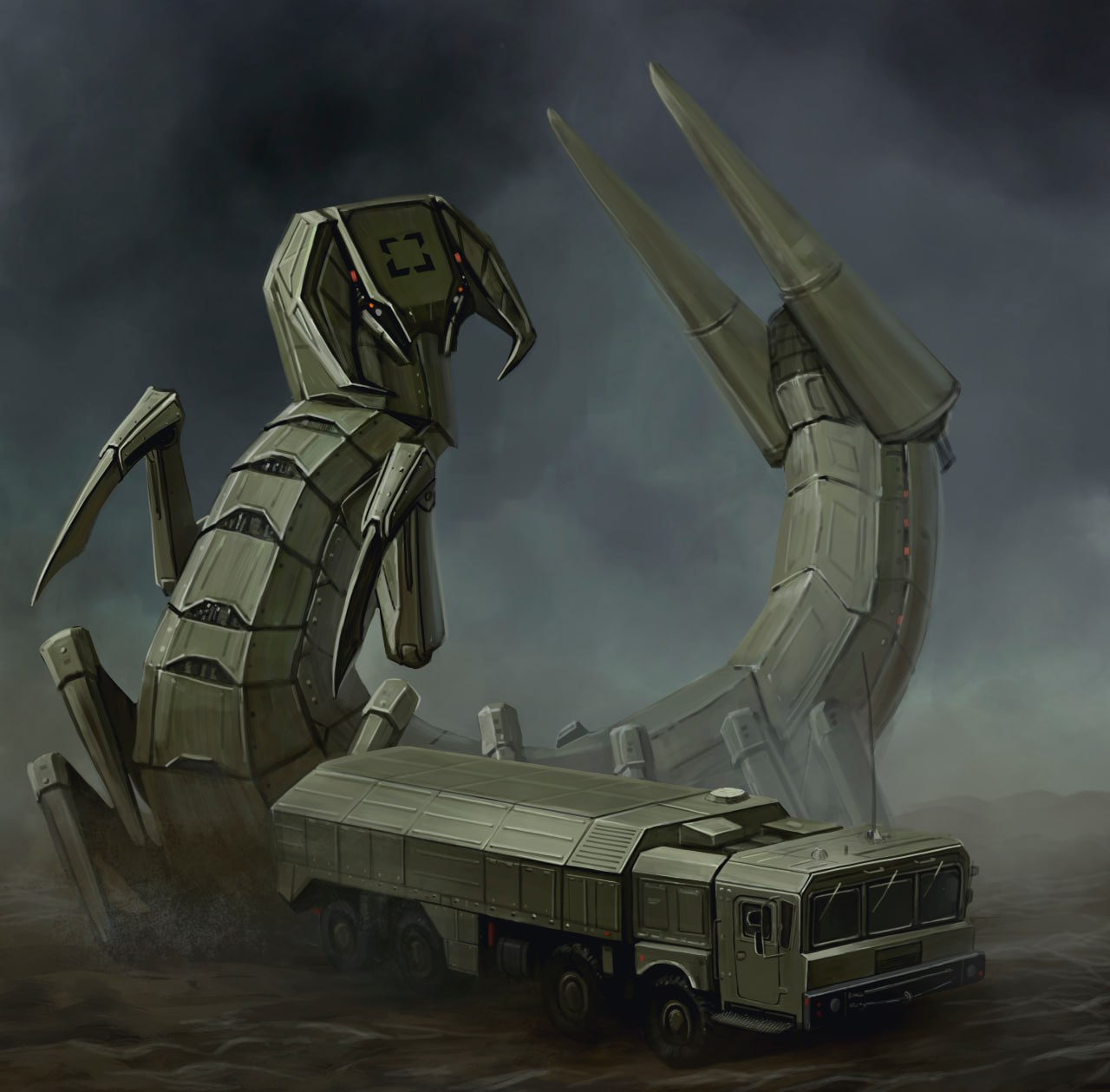Russian defense conglomerate Rostec Corporation, the parent holding company of all of the country’s state-owned arms makers, is commemorating the most popular weapons from the war by reimagining them as weaponized and robotized animals.
Air-To-Air Recharging? Russia Patents Drone That Can Wirelessly Power-Up Combat UAVs Via Inductive Charging
In what appears to be a public relations (PR) exercise, it also holds a vote for citizens to decide which artwork (or animated weapon) they like the most.
The war has seen Russia’s defense sector go into overdrive, churning out a diverse range of weapons and ammunition and simultaneously generating significant international interest, helped by their current battlefield usage that has upheld their relevance.
Russia’s admittedly superior position on the battlefield and Ukraine’s failed counteroffensive, acknowledged by Western press and officials, has only bolstered that image.
On its Telegram channel, Rostec has portrayed the Iskander tactical battlefield missile, the Tornado-S Multiple Rocket Launch System (MLRS), the UBIM Armored Engineer Vehicle, the Product 350 air-to-ground missile, the A-50U Airborne Warning Control System (AWACS) and the Msta-S self-propelled gun (SPG).
Readers have been asked to vote for their favorite design in a subsequent post. This also serves as an attempt to connect with the younger population and draw them into the groundswell of nationalist churning seen in Russian society.
Animal Transformer Weapons
The illustrations showed the Iskander-M as a tactical missile scolopendra, a parent species of centipedes found commonly worldwide. The actual missiles are the two fangs at the end of its tail.
The Tornado-S has been pictured as a “Volgatitan of Russian artillery,” where the dinosaur carries the rocket package on its back. Volgatitan are a part of the gigantic titanosaur species of long-necked and tailed dinosaurs that lived in Russia between 66 and 100 million years ago.
The UBIM Armored Engineer Vehicle has been imagined as a crab, with a large, menacing claw representing its giant excavator arm used to dig the earth. The Product 305 lancet kamikaze drone is a striking snake.

The Mi-28N, known for its night combat capability, has been depicted more fittingly as a bat. A mythical white flying whale symbolizes the A-50U AWACS, with the radar dome on the mammal’s back. Lastly, the 152-mm Msta-S SPG is considered an embodiment of a wild boar.
Promote Russian Industry
“The work of the Russian army and domestic weapons zone began a new heroic epic that needs visual images. For about ten years, the Russian soldier has been strongly associated with a ‘polite person,’ and we imagine him very well. Russian military equipment has a justified reputation as a ‘weapon of victory.’
“But in modern mythology, its image is practically not visualized,” Rostec said in a post on its Telegram channel. It added that “almost 90% of the equipment participating in the SVO was produced by enterprises of the State Corporation.”
Animals’ Traits Similar To Weapons
The company had sound reasoning behind choosing each animal to represent each of the weapons by drawing parallels between the platforms’ capability and the defining nature of each creature.
The Msta-S SPG, for instance, is “distinguished by its mobility, high rate of fire, and the ability to fire different types of projectiles, similar to “the ferocious wild boar that lives in forests throughout Russia.” The speed and fury of a wild boar’s attack is practically a “fire raid” by “Msta.”
The Tornado-S MLRS, too, earned a reputation for accuracy and range, and a previous EurAsian Times analysis had found it superior to the American High-Mobility Artillery Rocket System (HIMARS). With a salvo able to cover an area of 100 football fields, the Volgatitan intimidated predators with its sheer size and strength.
The Iskander-M, meanwhile, became the mainstay of Russia’s ground-based long-range tactical missile strikes with devastatingly powerful warheads that could “destroy buildings, warships or fortifications.” This makes it similar to the Scolopendra, which lives in parts of southern Russia and can defeat “opponents larger than itself.”
The Mi-28N attack helicopter specializes in searching and destroying tanks, armored vehicles, infantry, and low-speed air targets, “even at night and in the worst weather conditions.” This is similar to the bat, a typical inhabitant of central Russia and a true “Night Hunter.”
Whales and the A-50U AWACS have been likened due to their ability to connect and form a network over long distances. The A-50U tracks a large number of targets and connects with friendly fighters in a secure web, similar to whales communicating with one another at a distance of hundreds of kilometers.
- The author can be reached at satamp@gmail.com
- Follow EurAsian Times on Google News